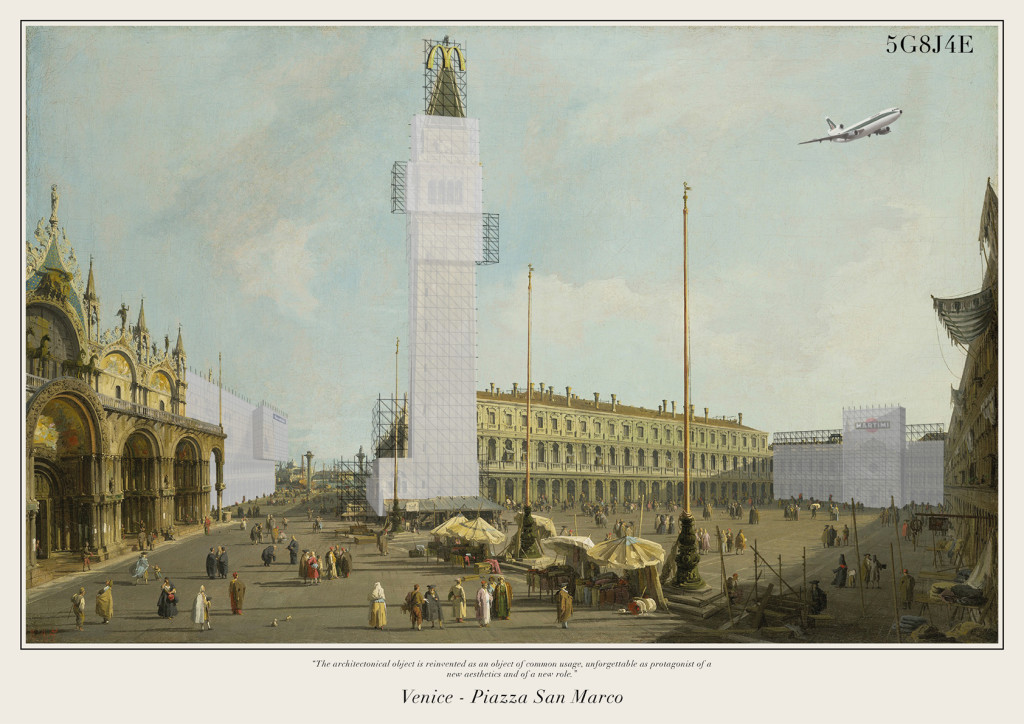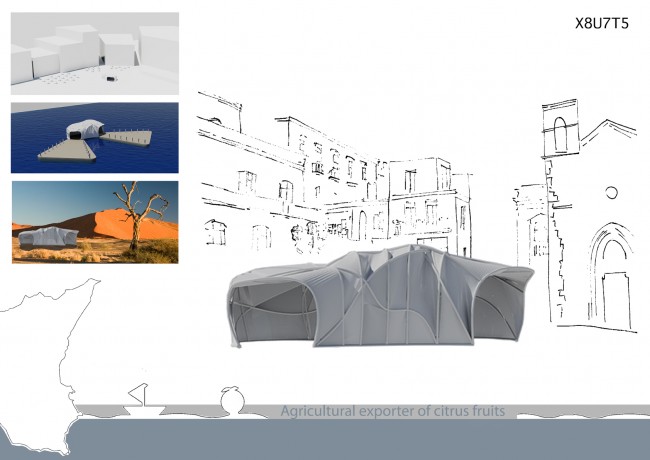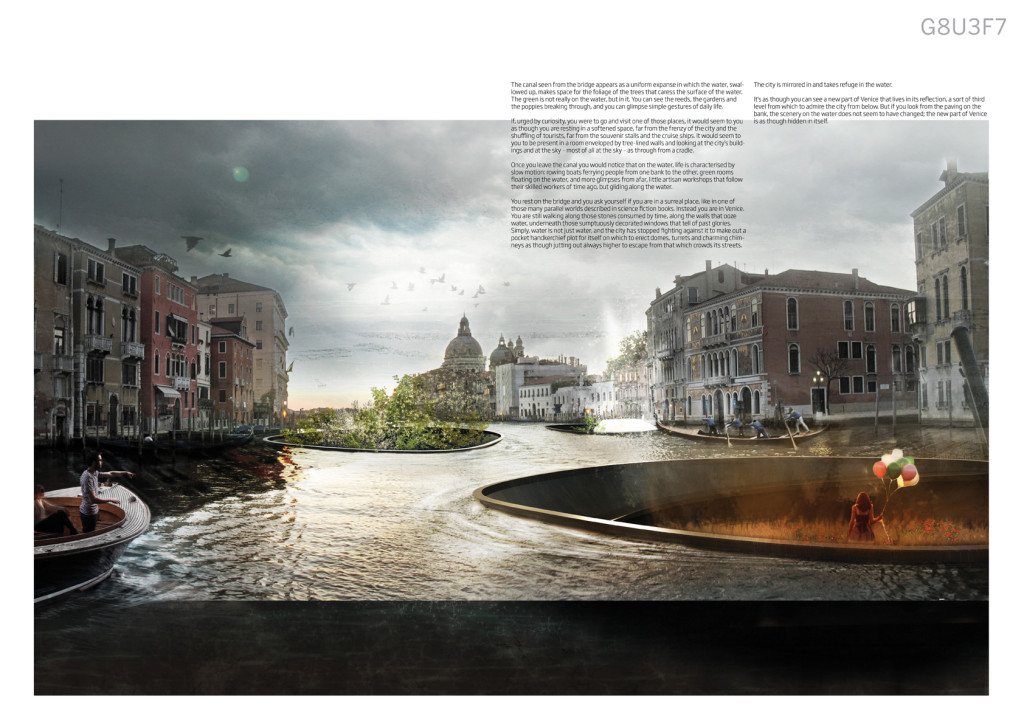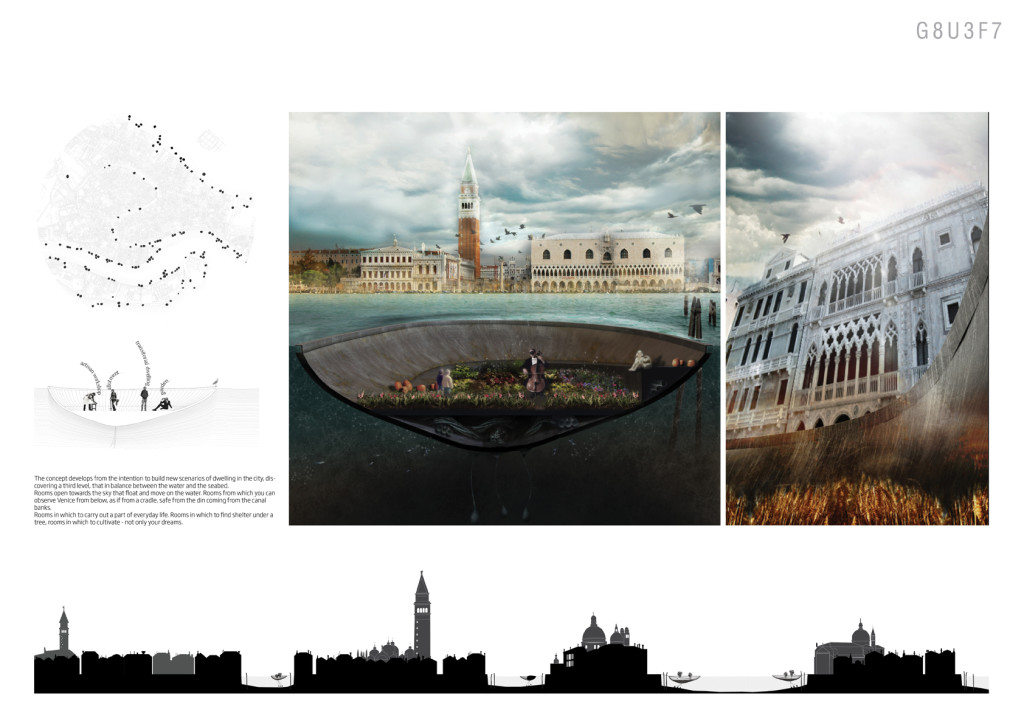Info:
Title: VENICE FIRST PRIZE // Venice - Code: G8U3F7Contest: Venice / 2011
By: A. Bottero, S. Della Rocca, V. Bruni
Views: 8526 Likes: 6
Votes:
BJARKE INGELS9 NERI OXMAN10 ELENA MANFERDINI9 MARIA LUDOVICA TRAMONTIN8 BOSTJAN VUGA48.0
VENICE FIRST PRIZE // Venice
Venice is stolen from the lagoon. A constant struggle of men stealing fragments of ground from the water. Venetian buildings were built by establishing a precise relationship with the water: they faced the canals showing their splendor and wealth. The same Canal Grande was one of the most majestic scenographies of the power of all ages. The canals were the city streets: rowing boats and gondolas were the main means of transport, so that the main facades of their buildings faced the water, while the backs hid the pedestrian city.
Not merely places of transit, a substantial part of daily life was carried out on the canals and here social interactions and commercial transactions took place.
Today the Canal Grande is a bustle of ferry boats, private boats and a mass of passengers and tourists. All around there are gondolas in gold plastic, neon signs, lobster pizzas and cameras galore.
The perception of the reality from water is accelerated and distorted. The meaning of travel on the water is reduced to the fastest way to move from one point to another of the city, saving tourists from going up and down all those bridges.
Then there are the gondolas.
As everybody knows, Venetian people no longer get on gondolas. Nowadays that’s tourist stuff, a moment of folklore, or something that’s done to create that traditional romantic image to stick on your refrigerator after returning from a trip.
The link between man and boat, city and water is therefore modified. The act in itself of gliding along slowly with a rowing boat on a canal, establishes a connection between man and water that motor boats cannot reproduce. One has the time to appreciate the changing nuances of purple and ocher on the water and the reflection of the city: pink plaster peeling from the walls of its buildings, crumbling bricks from their walls, the decorated mansion entrances in wood or cast iron over the canals.
Water as a space of transit, a neutral dimension in which to simply migrate from one place to another. In our cities we are accustomed to distinguishing spaces of transit from spaces of standing.
But can a space of transit mutate into a space of standing? How can architecture manage to overturn a relation taken for granted?
The concept develops around this thought and from the intention to build new scenarios of dwelling in the city, discovering a third level, that in balance between the water and the seabed.
Rooms open towards the sky that float and move on the water. Rooms from which you can observe Venice from below, as if from a cradle, safe from the din coming from the canal banks.
Rooms in which to carry out a part of everyday life. Rooms in which to find shelter under a tree, rooms in which to cultivate – not only your dreams.
This new urban level responds to the lack of dry land, creating a network of public spaces, green areas, places of work and of transitional dwelling. A new form of nomadism around the city, after all, losing oneself in a city does not necessarily mean losing oneself on dry land.
New spaces available to the citizens of Venice. The current problem of the decreasing population and the disproportion between locals and tourists has altered the balance between local population and the market, causing unsustainable consequences. The system of green rooms can give a solution to this problem, taking as a reference the model of self-sustaining urban allotments and rural gardens that once took the place of the town squares, covering them in greenery.
The room system poses itself as an intermediary between the city and its lagoon, bringing onto the water that slow rhythm and slow dimension that characterises daily life on the dry land of Venice.
Water is no longer just a place in which the city reflects its tired beauty. In its reflection lives a new version of the city, a new dimension to explore, understand and live.
The vision of this Venice describes a parallel system which develops through a slow process of re-appropriation of water on the part of Venetians, in harmony with the slow rhythm of the social dynamics which have taken place on dry land for centuries. This slowness of the process makes time for it to be understood and realised, therefore, with participation from the citizens.
Venice has grown from the water; the subtle irony in imagining a future in which the sustaining of the city arrives from that water.
Info:
Title: VENICE FIRST PRIZE // Venice
Time: 8 giugno 2011
Category: Venice
Views: 8526 Likes: 6
Tags: -








